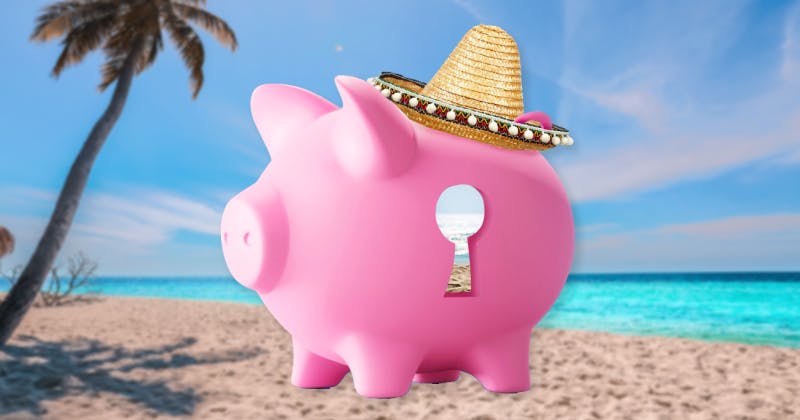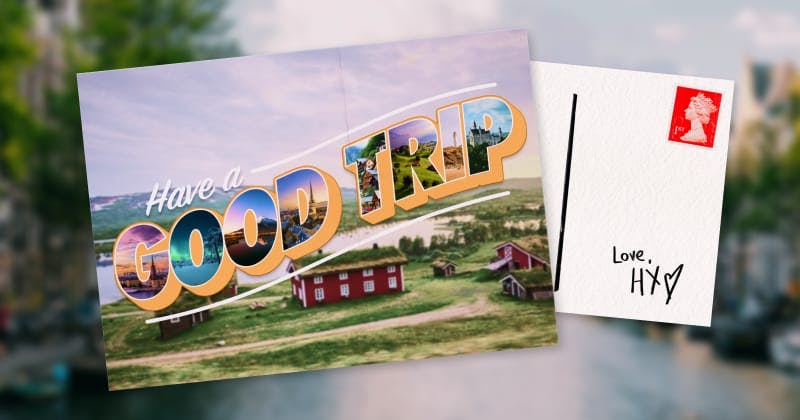
Germany

It's no surprise you'll find some of the best lager in the world in Germany – they invented it. It comes from the German word 'lagern', which means to store, as Bavarian brewers started storing beer in cold caves. This stopped it from spoiling over the summer and gave that clean 'lagery' character we know and love.
Munich's a great place to start your beery adventure. For a classic golden lager a Munich helles is difficult to beat, as its smooth flavour and soft dry finish makes it particularly moreish. If you prefer toasty, chocolatey flavours found in darker beers, go for a rich and refreshing Munich dunkel. Or why not go all in and head there during Oktoberfest. It's probably the world's most famous beer festival, and it's the best place to sample huge steins of traditional märzen or the chuggable golden festbier we associate with the festival today. But be warned, at around 6% Oktoberfest beers might catch up with you quickly.
Cologne's worth the trip too, as it's the only place in the world that's allowed to brew a proper kölsch. This ridiculously refreshing ale/lager hybrid is served in 200ml stanges, so every sip is as satisfying as that first one after a hard day's graft. When you get to a tap house in Cologne you might be surprised that there's no bar. Instead, take a seat and a waiter will keep you topped up until you put a coaster on top of your empty glass – fun and dangerous in equal measure.
Oktoberfest 101
Thinking of heading to Oktoberfest? Read our guide for everything you can expect from the world's most famous beer festival.
Prost!Czech Republic

If Germany invented the lager, the Czech Republic made it world-famous. In the 1800s everyone was pretty jealous of the pale ales the UK was shipping around the world and wanted their own thirst-quencher to match. The people of Pilsen's answer? The pilsner, of course.
Locals founded Pilsner Urquell in 1842, and they couldn't have timed it more perfectly. Glassware that could show off its gorgeous golden hue became more affordable around that time, plus new railroads around Europe quickly got it in the hands of awestruck consumers the world over.
You'll be able to find a world-beating pint wherever you go in the Czech Republic – they consume the most beer per person in the world, after all. But head to Pilsen and tour the iconic Pilsner Urquell brewery for the best taste of the beer that brought bright, refreshing lager to the masses. They still brew and serve their beer from wooden barrels like they've been doing for hundreds of years.
Before ordering your first Czech pilsner, there are three main pours you need to know about. It's all about the foam, which is uniquely poured before the beer. There's hladinka, the most common pour that's got around three fingers worth of foam, šnyt, which is two parts beer to three parts foam, and mlíko, which looks like a glass full of milk with a little beer at the bottom. It'll look ridiculous to anyone from the UK, but it's delicious and goes great with a sweet dessert.
Belgium

When it comes to beer, Belgians are absolutely bonkers. In the best possible way, of course. They're not afraid to throw wild and whacky ingredients into their beverages, resulting in the most complex – and many would argue the best – beers in the world.
There's a lot to unpack with Belgian beer. Firstly, the country's best beer tends to be brewed by Trappist monks. Lots of monasteries moved to Belgium in the 1800s, initially brewing for their own use then opening up to the public later in the century. Secondly, it tends to be quite strong – cafes were banned from selling spirits after World War I, so breweries upped the strength of their beers to fill the gap. And finally, yeast strains tend to add notes of pepper, clove and a bit of fruit, giving the beers that distinctly Belgian character.
Trappist breweries usually brew dubbels at around 6%, tripels at 8% and quads upwards of 10%, but they hide the alcohol remarkably well. There are plenty of monasteries to choose from – while you're in the country Westvleteren is worth making a beeline to as you can only buy their beers straight from the brewery.
And there's a lot more to Belgium than just Trappist beers. Fancy sampling the Burgundy of Belgium? Head to the north for a Flanders red ale, which tastes more like red wine than ale. Or to try arguably the world's most ancient beer style, head to Brussels and seek out a lambic or a gueuze. Brewers expose the beer to wild yeast and bacteria, giving it a funky, sour flavour that's shaped by the local habitat.
UK

Ah the UK, the home of warm beer. Well no, actually, it's not warm at all. Real ale is probably what your grandparents drink and, contrary to popular belief, it's actually rather lovely.
Cask beer, real ale, or whatever you want to call it is unique because it arrives at the pub still brewing. That's because it's got live yeast in it, which when kept at around 11 to 13 degrees will further ferment the beer and give it a mild, natural carbonation that's a little more subtle than the fizzy suds lager drinkers might be used to. Cask almost went extinct as it's more difficult to manage than keg beer and goes stale very quickly – thank CAMRA (Campaign for Real Ale) that it didn't. But when you find a good real ale, you'll know it's worth the effort.
While pretty much any beer style can be served from a cask, it's a pint of bitter that most people are talking about when it comes to real ale. Back in the day you'd order a pint of ordinary, best, or strong bitter, with ordinary being the lowest in strength, strong being the, well, strongest and best somewhere in the middle and with higher-quality ingredients. They used to be served in snazzy dimpled mugs which have come back into fashion, but your elders will most likely insist on a straight glass. Bitters range a lot in flavour, though traditional examples perfectly balance sweet caramel malts with a touch of bitterness.
Depending on where you are in the UK, your pint could look significantly different. You won't find much head on your beer in southern England, but up north they use a sparkler to make it nice and frothy. The most extreme example of this is in the North East, where old-school pubs serve 'banked' beers with cloudy heads that seem to poke miles above the rim of the glass.
UK Short Breaks
Book an award-winning package with tickets and a hotel stay in one easy, money-saving deal from Holiday Extras.
Find out more...Ireland

Guinness. Need we say any more?
Fine. Ireland is known all over for that black (or dark ruby red if you ask the brewery), filling stout that's in almost every pub you've ever walked into. Guinness is an Irish stout, a style that's dry and astringent with notes of bittersweet coffee.
But why's it so creamy? That'll be the nitrogen they use to pour it out the tap, which creates loads of tiny bubbles that escape the beer and form that signature creamy head on the way. And what's with that silly little ritual they do when pouring the pint? Well, the two-stage pour is done partly because it's difficult to dispense in one go (because of those pesky little bubbles) and partly because it's great marketing. Looks rad either way.
Everyone says Guinness tastes better the closer you get to St James's Gate Brewery in Dublin, so go there. The 7-floor Guinness Storehouse does beer tours and experiences and surrounds a glass atrium in the shape of a Guinness glass. Dublin's lovely too, filled with hearty pubs, live music and amazing art and architecture.
Dublin Travel Guide
Fancy sipping on the best pint of Guinness you'll ever have? Dublin's the place to be. Here's everything you need to know about the Irish capital.
Cheers!USA

When you think of American beer, the first thing that comes to mind may well be those deliciously flavourless BBQ-ready light lagers pumped out by mega-corporations. Yummy. Well the USA is also the birthplace of the craft beer revolution and probably makes the best modern beers in the world.
American craft brewers took a lot of inspiration from the UK, supercharging pale ales and IPAs with US hops that pack a fruity, bitter punch. Along the west coast it's all about using the hops to add bold, aggressive bitterness, whereas the east coast prefers less hop bitterness and more fruity hop flavour and aroma. Either way, American IPAs tend to be big hitters.
Most US towns and cities seem to have craft breweries on every corner, serving up modern interpretations of practically any beer style you can think of. To sample the latest trends and brewing innovations, it's the place to be.
USA Travel Guide
The USA has something for every traveller, whether you want to explore national parks and UNESCO World Heritage Sites or sample some of the best craft beer in the world.
Find out more...








